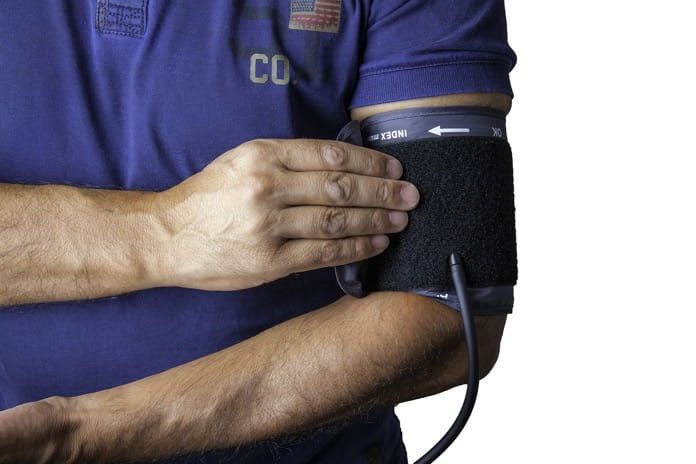Blood pressure measurements taken in the clinic may not accurately reflect blood pressure in day-to-day life.
Using a home blood pressure monitor could reveal cases of hypertension that might not be measurable in the clinic.
High blood pressure, referred to as hypertension, is a serious condition that increases the risk of heart disease or stroke.
Various medications and lifestyle changes can lower blood pressure, but it is first necessary for doctors to identify which of their patients have hypertension.
Blood pressure is typically measured in a clinic, but blood pressure can change from moment to moment in response to our current physiological and psychological states.
Clinical blood pressure measurements are therefore not always representative of what patients experience in their day-to-day lives outside the clinic.
In fact, as many as half of all hypertension patients whose blood pressure appears normal in the clinic may actually have elevated blood pressure.
Patients with this “masked hypertension” have twice the risk of developing cardiovascular disease compared to patients whose blood pressure is truly normal.
One approach to solve this problem is to have patients use a home blood pressure monitor on their own.
A recent Japanese study investigated if patients with masked hypertension, identified by home blood pressure monitoring, were at increased risk of either strokes or heart attacks due to coronary artery disease. The results of their study were published in the scientific journal JAMA Cardiology.
Measuring blood pressure in the study participants
The study included 4,261 patients in Japan who had either a history of cardiovascular disease or exhibited risk factors for cardiovascular diseases, such as diabetes, metabolic syndrome, or hypertension.
Almost 80% of the study participants were already taking drugs to lower drug pressure. The participants were 65 years old on average, and just over half of them were women.
The researchers measured the participants’ blood pressure in the clinic, following routine procedures. They also gave every participant a home blood pressure monitor and instructed them to use them in the morning and evening every day for two weeks.
Patients with masked hypertension were more likely to have a stroke
Just over half the patients in the study had elevated blood pressure at the clinic, meaning a blood pressure reading greater than 140/90 (systolic/diastolic blood pressure in mm Hg). However, an additional one in five patients had masked hypertension—that is, high blood pressure at home, but not at the clinic.
Thus, 40% of patients with apparently normal blood pressure readings at the clinic were actually suffering from masked hypertension. A smaller number of patients had high blood pressure at the clinic, but not at home.
The researchers took blood and urine samples from the patients.
They measured B-type natriuretic peptide (BNP) in the blood and the albumin-to-creatinine ratio in the urine. High concentrations of these can indicate that the heart has been damaged. Patients with masked hypertension had higher concentrations of both, compared to patients with normal blood pressure.
However, the concentrations were higher still in patients who had high blood pressure both at home and at the clinic.
The researchers kept track of the patients for up to six years after the blood pressure measurements were made. They found that patients with masked hypertension were more than three times as likely as patients with normal blood pressure to experience a stroke.
In fact, they were just as much at risk of stroke as those with high blood pressure both at home and in the clinic.
The smaller number of patients who only had elevated blood pressure in the clinic, and not according to the home blood pressure monitor, were no more likely to have a stroke than those with normal blood pressure at all times.
To put these risks in context, 1% of patients with normal blood pressure had a stroke during the six-year monitoring period, and just over 3% of hypertensive or masked hypertensive patients had a stroke.
Being hypertensive, at home, at the clinic, or both, had no effect on the risk of coronary artery disease, with about 2% of patients in all groups having a heart attack in the six years after the blood pressure measurements were made.
A home blood pressure monitor is a useful supplement to clinical blood pressure measurements
The study had several limitations. It was strictly observational and did not test if anti-hypertensive medications were effective in patients with masked hypertension.
However, it clearly demonstrated that a home blood pressure monitor could identify patients with masked hypertension and that these patients experienced the same increased risk of stroke as patients whose hypertension could be identified in the clinic.
Using a home blood pressure monitor could potentially be an effective complement to clinical measurements, but additional clinical studies are required to confirm that lowering home blood pressure decreases the risk of disease and death, as well as to investigate the cost-effectiveness of the approach.
Written by Bryan Hughes, PhD
Relevant topics that may be of interest to you:
- Is poor oral health linked to worse blood pressure control?
- Nitrate-rich Vegetables and the Lowering of Blood Pressure Myth
- Can dementia be prevented with stricter blood pressure control?
- Ambulatory blood pressure monitoring may help prevent premature deaths
- How do smoking, diabetes, and blood pressure affect heart attacks in women?
- Developers test new blood pressure app for iPhone
Reference: Fujiwara, T., Yano, Y., Hoshide, S., Kanegae, H. & Kario, K. Association of cardiovascular outcomes with masked hypertension defined by home blood pressure monitoring in a japanese general practice population. JAMA Cardiology (2018)



